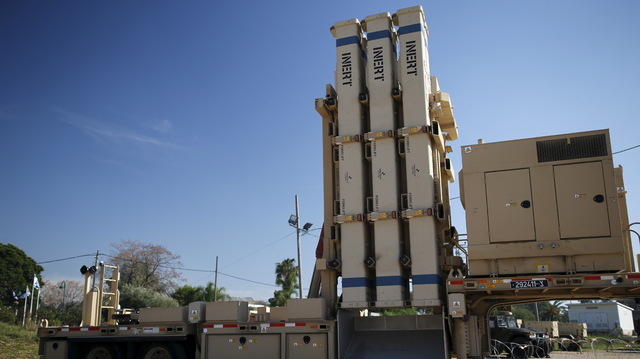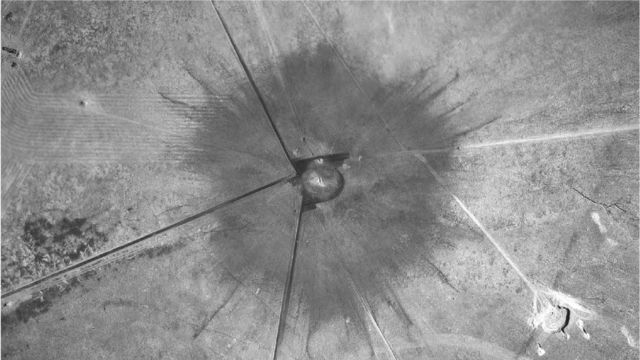The Historically Important Treaty on the Prohibition of Nuclear Weapons Was Adopted

Entirely unnoticed by the Czech media, the Treaty on the Prohibition of Nuclear Weapons (NWT) was approved on July 7 2017, the last day of the second round of the UN Conference in New York. The session was preceded by its first round, which took place in the second half of March of this year (see International Law Reflections no. 10, November 11, 2016, no. 1, March 1, 2017, no. 5, May 2, 2017 and no. 8, June 23, 2017). Around 130 states joined the negotiations, including the Netherlands as the only NATO member state, and they also included representatives of several international, regional and non-governmental organisations. Additionally, those present included religious leaders as well as the survivors of the American atomic bombing in Hiroshima and Nagasaki in August 1945, who in Japan are referred to as ‘hibakusha’. Out of the EU countries, Austria, Ireland, Sweden, and the already mentioned Netherlands joined the table. All states which possess nuclear weapons and the majority of their allied and partner countries, including the Czech Republic, boycotted both rounds of the talks. The session was preceded by its first round, which took place in the second half of March of this year (see the following International Law Reflections no. 10, November 11, 2016, no. 1, March 1, 2017 and no. 5, May 2, 2017 and no. 8 June 23, 2017)
The Characteristics of the Structure and the Content of the NWT
In accordance with the Vienna Convention on the Law of Treaties and the standard procedure of instruments of the international law, the NWT includes its preamble and the operative section.
The comparatively longer preamble is mostly concerned with the catastrophic humanitarian consequences of the use of nuclear weapons. In regards to this, it, among other things, emphasises the disproportionate impact of nuclear weapons on indigenous people, especially in the case of nuclear testing. It also serves as a reminder that the threat of the use of nuclear weapons or their actual use is completely incompatible with the UN Charter and international humanitarian law. Additionally, it appreciates the importance of the Comprehensive Nuclear-Test-Ban Treaty (CTBT) and the creation of the nuclear- weapon-free zones. It recognises the core role of the Treaty on the Non-Proliferation of Nuclear Weapons (NPT) in preserving international peace and security, and it calls for an absolute and effective abiding by its obligations. Simultaneously, it raises awareness about the risks and consequences of the use of nuclear weapons for the present and future generations, and quotes the vague content of the NPT’s article VI, which is the only article of the document related to the nuclear disarmament. The preamble also includes the necessity to encourage and support women into International Law Reflection 2017/11/EN 2 their effectively taking part in the nuclear disarmament process, in the promotion of peace, and raising awareness of the importance of peace and disarmament education.
The operative part comprises 20 articles. The most significant is Article 1, which prohibits the development, testing, production and manufacture of nuclear weapons and any other nuclear explosive devices, and any form of acquiring, possessing, and/or stockpiling them. The prohibition also covers the transfer of these weapons to any recipient, their use or threats of their use, any form of assistance in such activities, and also the stationing of these weapons in the territories of the non-nuclear-armed states.
Article 2 is concerned with declarations about the ownership, possession, and control of nuclear weapons which each State Party needs to present to the UN Secretary General as the depositary of the NWT, not later than 30 days after the Treaty enters into force for the State. Article 3 is devoted to the responsibilities of the State Parties regarding the comprehensive safeguards agreements concluded with the International Atomic Energy Agency.
Article 4 is the longest in terms of content and addresses the issue of the total, verifiable and irreversible elimination of nuclear weapons. It involves the duties of the State Parties who possess nuclear weapons and the Parties who host these weapons on their territory. In addition to the removal of the weapons from their operational status, and the following relocation with the intention of destroying them, these duties also include providing regular reports about the State´s adherence to these responsibilities, and its conversion of all nuclear-weapons-related facilities, at the meetings of States Parties. Special roles in this process are allocated to the International Atomic Energy Agency and its safeguarding system, and to a further unspecified international body.
Article 5 urges the States Parties to take all appropriate legal, administrative and other measures on the national level to implement their obligations. Article 6 deals with the assistance to the victims of the use and testing of nuclear weapons and the related environmental remediation. International cooperation and helping State with fulfilling the given duties are then dealt with in Article 7, which also commands the nuclear-armed states to compensate the victims of nuclear weapons use and testing and actively participate in the environmental remediation, among other things.
Article 8 discusses the meetings of the States Parties. The very first one will take place within one year after the Treaty enters into force, and the subsequent once will be held regularly every two years. The depositary is entitled to assemble an extraordinary meeting if at least one third of the State Parties support a written request to summon one. Additionally, review conferences will take place every six years.
Article 9 concentrates on the means of covering the financial expenses regarding, for example, the aforementioned meetings and the implementation of verifying, eliminating and converting measures. According to Article 10, any State Party may propose amendments to the Treaty and this article states for proposing amendments and their enter into force. Article 11 deals with the settlement of disputes between two or more State Parties which are related to the interpretation or application of the Treaty’s provisions.
Articles 12, 13, 14, and 15 are related to achieving the Treaty’s universality, and its signature, ratification, acceptance, approval or accession and the entry into force. Article 16 specifically rules out the possibility of making reservations to any Articles of the Treaty. According to Article 17, the Treaty shall be of an unlimited duration. This article also enables each State Party to withdrawal from the document if it decides that extraordinary events have jeopardized the supreme interests of its country and it shall give notice of such a withdrawal to the depositary. The withdrawal itself shall only take effect one year after the depository receives the notification. “If, however, on the expiry of that 12-month period, the withdrawing State Party is a party to an armed conflict, the State Party shall continue to be bound by the obligations of this Treaty and of any additional protocols until it is no longer party to an armed conflict”. Article 18 establishes the Treaty’s relationships with other agreements. It specifies that “the implementation of this Treaty shall not prejudice obligations undertaken by States Parties with regard to existing international agreements, to which they are party, where those obligations are consistent with the Treaty”. Article 19 deals with the designation of the Secretary-General of the United Nations as the Depositary of this Treaty and Article 20 presents the authenticity of the text of the Treaty in six languages of the UN (English, Arabic, Chinese, French, Spanish, and Russian).
The Joint Press Statement of the United States, France and the United Kingdom
Following the NWT adoption, the United States mission to the United Nations in New York released a joint press statement from the Permanent Representatives to the United Nations of the United States, United Kingdom and France. Aside from their refusal to join the NWT, it declares that there will be no legal changes in the positions of these countries regarding nuclear weapons. The three countries also do not accept any arguments claiming that “this treaty reflects or in any way contributes to the development of customary international law”.
The negative attitudes towards the NWT outlined in the statement are almost identical with the arguments voiced by these countries in the past, especially those regarding its adverse effect on the international security situation and its “incompatibility with the policy of nuclear deterrence, which has been essential to keeping the peace in Europe and North Asia for over 70 years”. According to the authors, the NWT will also not foster a unification of different actors´ views and attitudes, especially regarding the need to face the threat of North Korea’s nuclear program, and other security challenges. Besides that, the Treaty allegedly disrupts the existing international security architecture.
In the conclusion of the statement, the authors express their continued commitment to the Treaty on the Non-Proliferation of Nuclear Weapons (NPT), and its authority, universality, and effectiveness. The very last sentence appeals to “the common responsibility to protect and strengthen our collective security system in order to further promote international peace, stability and security”.
The Significance of the New Instrument of International Law
The approved Treaty, in fact, cannot agree with all visions for the prohibition of nuclear weapons. Nevertheless, it represents a legally binding and effective instrument for reaching the goal of the elimination of these weapons. According to the statement of the executive director of the US non-governmental organisation ‘Arms Control Association’ and the internationally recognized expert on nuclear disarmament Daryl G. Kimball “in spite of the fact that the Treaty will not immediately lead to the elimination of nuclear weapons, it delegitimizes these weapons and strengthen legal and political norms against their use”. The acceptance of the NWT means reaching the first goal of the long-term effort of the international community to achieve the prohibition of nuclear weapons which began in January 24, 1946 when the General Assembly of the UN issued its first resolution. Through the establishment of the relevant commission, the resolution called it for the drafting of a document regarding the elimination of nuclear weapons and other mass destruction weapons.
Another important benchmark was the acceptance of the advisory opinion of the International Court of Justice (ICJ) in Hague in 1996 in which the ICJ unanimously agreed that “there exists an obligation to pursue in good faith and bring to a conclusion negotiations leading to nuclear disarmament in all its aspects under strict and effective international control”. This responsibility is unconditional and universal, as it is set out in the article VI of the NPT.
The significance of the approved Treaty rises with the continuity of nuclear-armed races, the on-going modernisation of nuclear weapons and their means of delivery, and the threats of their proliferation. Equally importantly, it is strengthened by the notions of the humanitarian consequences of an intentional or accidental use of these weapons on human beings and the environment, as well as the slow decrease of the total estimated number of nuclear weapons which in January 2017 was as high 14 900 nuclear weapons. The important Comprehensive Nuclear-Test-Ban Treaty (CTBT), adopted in 1996, still has not entered into force, as a result among others of the US and China’s refusal to ratify it, among other reasons. Also, for several years now, there was no significant progress in the negotiations regarding the Fissile Material Cut-Off Treaty (FMCT) at the Conference on Disarmament in Geneva. Furthermore, the US and Russia refuse to de-alert certain types of nuclear weapons, which are ready to launch in the scope of mere minutes, which is a result of the nuclear deterrence policy, by which all nuclear-armed states justify their possession of these weapons. Moreover, it is important to be reminded about the increasingly acute threat of possible cyber attacks on the nuclear devices and their unpredictable impact on the command and control systems of various kinds of nuclear weapons.
In addition to these threats, we must take into account that there are also hardly conceivable amounts of financial resources being wasted on the maintenance and modernisation of nuclear weapons and their means of delivery. While the maintenance and modernisation bring high profits for the military industrial complex, the funds could be more efficiently used in other more important areas such as the global fight against poverty, climate change, healthcare development, education, etc.
Conclusion and Possible Future Development
The Treaty will be submitted for signature at the 72nd UN General Assembly on September 20, 2017 in New York. If ratified by at least fifty states, it will enter into force in the following 90 days. It seems highly likely that the nuclear states and the majority of their allied and partner states, especially those relying on the nuclear protection of the United States, will remain in opposition to the new Treaty, whereas about 120 non-nuclear states will sign and ratify it. After the NWT enters into force, it will coexist with the current NPT. Its Depositary will be the Secretary-General of the United Nations.
The second and significantly longer part of the nuclear disarmament process, which has the elimination of nuclear weapons as its main goal, cannot take place without the active participation of the nuclear-armed states. At this very moment, it is difficult to predict which nuclear armed countries will join the NWT, or when that would happen. Nonetheless, it is safe to assume that as a result of the existence of this instrument of international law, these countries will face an increasing ethical, moral, and political pressure imposed on them by various parts of the civil society to get rid of these types of weapons. The possession and a potential use of these weapons, which have an indiscriminate impact on combatants and civilians when they are used, cause incredible suffering and gravely damage the environment, are, above all, completely incompatible with international humanitarian law.








